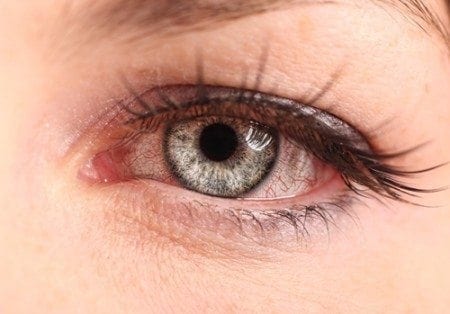When you look at an object, such as your bedside table lamps, you’re seeing light.
Of course, it may only appear that the bulb itself is directly projecting light. However, everything you see results from illumination, whether from the sun or an artificial source. This is why you can’t see objects in the dark.
Furthermore, each color you see is actually light being reflected off an object. If, for instance, you’re wearing a red shirt, that means the material that it is made out of reflects red light and absorbs other colors. The same is true of a yellow taxi or green dollar bill. The only caveat is that our vision is restricted to colors of the visible spectrum, a small part of all electromagnetic radiation that includes ultraviolet and infrared.
This radiation is made of photons traveling at the speed of light. Although these particles require special equipment to see, your eyes are tasked with processing the information from those photons and passing it on to the brain so that you can see images.
How does light interact with the eye
There are several parts of your eyes that help with capturing and processing light. When you see illumination from your table reading lamps or reflected off an object, it passes through your cornea, pupil and lens. Then, the light hits your retina, which is a layer of tissue at the back of your eye that contains your photoreceptor cells known as rods and cones. The former function for low light conditions and the latter are used for processing color and bright light. There are three types of cones – red, yellow and green – and each type denotes sensitivity to the corresponding color of light.
The pupil, which is controlled by the iris, expands and contracts to regulate how much light gets into your eye much like a camera’s aperture. The lens bends light that enters the eye. In conjunction with the cornea, the lens is responsible for focusing.
Spotlight on the retina
Of all the parts of your eye related to light, the retina may be the most important, as it is actually part of your brain, to which it is connected via a group of fibrous cells known as the optic nerve. Your blind spot is located in the retina and is the exact location where the optic nerve and retina connect. There are noticeably more rods than cones in your retina, and they are limited to the periphery. In the center of the retina is an area known as the fovea, which is completely populated by cones. For this reason, our central vision isn’t as defined at night.
Both types of these cells are responsible for turning those photons in light into signals that tell your brain what you’re seeing. If you read under dim light, you have a harder time seeing because there are fewer of these particles to process.
How the cornea and lens affect the retina
Given that light has to reach your retina for your brain to receive signals and form a complete image, changes in your lens and cornea can hinder this process. If, for instance, you have an age-related vision problem, such as macular degeneration or cataracts, your lens is affected such that not enough light can pass into your eye and reach your retina. For the former condition, the lens yellows and becomes less pliable, and cataracts involves a build up of proteins in the lens.
Due to such issues, many individuals who are older than 40 require more light to see. By increasing the brightness of a table or floor lamp, the amount of light that is reflected off objects is increased, thereby helping more light reach the retina.



